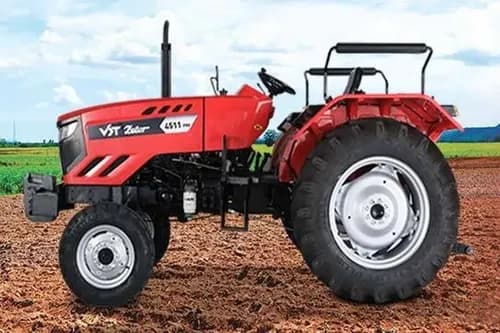Ad
Ad
Barley Farming In India: A Promising Crop for Indian Farmers
Barley farming contributes to the rural economy in India. In this article, we will discuss the types of Barley, Health Benefits of Barley, Barley Production in India, the cultivation process, types of barley, challenges, and the economic impact of barley farming in India.

Barley is commonly known as “Jau” in Hindi. Hordeum vulgare L. is the scientific name of barley. It is one of the most important cereal grain crops after rice, wheat, and maize. In India, barley is cultivated both as a summer crop in temperate regions and as a winter crop in tropical regions. Barley has a short growing season and good drought tolerance. Rajasthan is the largest barley-producing state in India.
Barley Farming In India
Historically, Barley was mainly used as livestock feed, but now it is widely consumed by humans (as barley malt) and plays a significant role in industrial applications.
India ranks 22nd in the world in barley production. Rajasthan is India's leading producer of barley. In 2021, total barley production in India was 1.67 million metric tonnes. This article explores the various aspects of barley farming in India, including types of Barley, Health Benefits of Barley, Barley Production in India, the cultivation process, types of barley, challenges, and the economic impact of barley farming in India.
Why isn't barley grown in India?
Historically, Barley is not a staple crop or food. India consumes significantly less barley than many other countries. Barley is the primary ingredient in beer, an alcoholic beverage, and the beer market is heavily reliant on domestic beer production. Barley was imported into India for the manufacturing of beer in 2019 and 2020. This implies the barley market and a lack of sufficient production to meet local demand.
There are numerous information gaps between farmers and the firms that require these items and fail to inform farmers of their needs. This causes farmers to shift to other crops that are normally in high demand, sometimes ignoring crops like barley. In most sections of the country, barley may be cultivated in plenty. Barley farming in India is performed in Rajasthan, Gujarat, Maharashtra, and Uttar Pradesh.
There are also some transportation constraints. Telangana and Maharashtra are the states that produce beer. Transportation from Rajasthan to these states is frequently expensive. To reduce costs, most beer manufacturers hunt for raw ingredients locally.
Domestic consumption of barley appears to be on the decline, with a 10% decrease in 2021 and a 14% decrease in 2022. Barley is eaten as kichdi and in soups, although it is not a favourite food grain in most of the country, and its popularity as a cereal is low. Though a healthy cereal, there needs to be a lot more awareness about barley and its benefits among Indian consumers, which may be a hurdle in and of itself.
Also Read: Green Peas Farming: A Comprehensive Guide
Health Benefits of Barley
Barley offers several health benefits:
- Prevents gallstones in women.
- Improves immunity.
- Beneficial for anaemia patients.
- It helps prevent bone disorders.
- Lowers cholesterol.
- Aids in weight loss.
- Supports digestion.
- Helps control Type-2 diabetes.
- Acts as a toxin cleanser.
- Prevents urinary tract infections.
- Treats kidney stones.
- Provides protection against cancer.
- It helps manage asthma.
Major Barley Production States in India
The primary barley-producing states in India include:
- Rajasthan
- Uttar Pradesh
- Madhya Pradesh
- Haryana
- Punjab
- West Bengal
- Jammu & Kashmir
- Some regions in Bihar, Uttaranchal, and Himachal Pradesh.
Types of Barley Production in India
Malt Barley VarietiesBH-75, PL-426, BH-393, Alfa93, BCU73, RD2503, K551, DL88, DWR 28, DWRUB52, RD2668, DWRB 73, DWRUB64, and DWRUB52.
Feed Barley Varieties (Irrigated)RD2035, RD2503, RD2552, BH902, PL426, K329, K508, K409, Narendra Barley-2 (NDB940), BH393, RD2592, and PL751.
Feed Barley Varieties (Rainfed)RD2508, K560, K603, RD2624, PL419, RD2660, and Getanjali (K1149).
There are over 50 new high-yielding Types of Barley available on the market. The types of Barley employed in each region vary according to soil structure and climate circumstances. Farmers should use the seeds according to the climatic conditions and soil.
Sowing different types only for yield will result in poor production of barley if they are not fit for your conditions. Seed varieties differ for both rainfed and irrigated crops.
Climatic Conditions and Geographical Distribution
Barley is a versatile crop that can grow in a range of climatic conditions. However, it is particularly well-suited to temperate climates with cool temperatures. In India, barley is primarily grown in the states of Rajasthan, Uttar Pradesh, Haryana, Madhya Pradesh, and Punjab.
These regions provide the ideal combination of temperature, soil, and water availability for successful barley cultivation. Barley can be grown as both a summer crop and a winter crop.
The ideal germination temperature required for Barley farming is 12°C to 25°C. The maturity temperature required for Barley farming is 30°C to 32°C. It is Sensitive to frost at any growth stage. Barley has a good tolerance to drought conditions.
Cultivation Practices
Land Preparation: Barley cultivation typically begins with land preparation. Farmers plough and harvest the fields to create a suitable seedbed. Proper soil preparation is essential for good seed germination and root development.
Sowing: The sowing of barley usually takes place between November and December. The timing is critical, as barley requires a period to grow, and exposure to cold temperatures, for optimal growth and development. The recommended sowing depth is around 5-8 cm.
Soil Requirements for Barley Cultivation: Barley can be grown in a wide range of soils, including:Saline, Sodic, and Lighter soils. The best soil type for barley farming in India is Sandy to moderately heavy loam soils with neutral to saline reaction and medium fertility.
Fertilisation: Barley requires adequate nutrients for optimal growth. Farmers apply fertilizers based on soil testing and nutrient requirements. Nitrogen, phosphorus, and potassium are essential elements for barley cultivation.
Irrigation: Barley is moderately drought-tolerant but benefits from timely irrigation. The frequency and amount of irrigation depend on factors such as soil type, climate, and growth stage. In most of the country, barley requires irrigation only three times over its growth cycle, unless it is dry. Once during seeding, once every 30 and 60 days during panicle formation, and once every 90 days during grain formation.
Disease and Pest Management: Common diseases affecting barley include rust, smut, and leaf blight. Integrated pest management practices are employed to control pests such as aphids and mites. Farmers may use chemical pesticides, taking care to follow recommended guidelines.
Harvesting: Barley is typically ready for harvest in March or April, depending on the variety and local growing conditions. The crop is ready when the grains have attained the desired moisture content. Harvesting is usually done using combine harvesters, which improve efficiency and reduce post-harvest losses.
In rainfall regions, most types of barley produce an average yield of 2000-2500 kg. In irrigated conditions, the production of barley can reach 3500 kg per acre.
Crop rotation: Crop rotation is popular in many parts of India for barley. Rice is the most commonly rotated crop. Depending on the region, other crops are rotated.
Challenges in Barley Farming In India
Climate Variability: Unpredictable weather patterns, including untimely rains and temperature fluctuations, can impact barley yields.
Technological Adoption: Limited access to modern farming technologies and practices can hinder the productivity and competitiveness of barley farming in certain regions.
Disease and Pest Infestations: Barley is susceptible to various diseases and pests that can reduce yields. Regular monitoring and timely interventions are essential to mitigate these risks.
Market Dynamics: Fluctuations in market prices and demand for barley can affect the economic viability of barley farming. Farmers often face challenges in obtaining fair prices for their produce.
Economic Impact of Barley Farming In India
Barley farming contributes significantly to the rural economy in India. It provides livelihoods to a large number of farmers, especially in the states where it is extensively cultivated. The crop has diverse uses, including animal feed, malting for the production of beer, and as a nutritious food source for humans.
Also Read: Potato Farming in India: Role of Potatoes in Indian Agriculture
Conclusion
Barley farming in India plays a vital role in the agriculture sector. As the demand for diverse crops and sustainable farming practices grows, the cultivation of barley is likely to evolve with the integration of modern technologies and improved agronomic practices.
Remember, successful barley farming in India involves proper soil preparation, timely sowing, and appropriate irrigation. As a farmer understanding these aspects will help you grow healthy barley crops.
Features & Articles
Comprehensive Guide to Tractor Transmission System: Types, Functions, and Future Innovations
Learn about tractor transmission types, components, functions, and selection factors to enhance efficiency, performance, and agricultural productivity....
12-Mar-25 09:14 AM
Read Full NewsModern Tractors and Precision Farming: Transforming Agriculture for Sustainability
Precision farming enhances agriculture by integrating GPS, AI, and modern tractors for sustainable, efficient, and productive farming practices in India....
05-Feb-25 11:57 AM
Read Full NewsTop 10 Tractors Under 30 HP in India 2025: Guide
Top 10 tractors under 30 HP in India offer efficiency, affordability, and power, ideal for small farms with diverse agricultural needs....
03-Feb-25 01:17 PM
Read Full NewsNew Holland 3630 TX Super Plus vs Farmtrac 60 PowerMaxx: Detailed Comparison
Compare New Holland 3630 and Farmtrac 60 tractors by specs, price, and features to find the perfect fit for your farm....
15-Jan-25 12:23 PM
Read Full NewsSwaraj 735 FE Vs Eicher 380 2WD Prima G3: Detailed Comparison
The Swaraj 735 FE and Eicher 380 2WD Prima G3 are reliable, powerful tractors suited for various farming tasks....
14-Jan-25 09:41 AM
Read Full NewsHow to Choose the Perfect Tractor for Your Farm: A Comprehensive Guide
Choose the right tractor by assessing farm needs, horsepower, efficiency, comfort, and budget to enhance productivity and savings....
09-Jan-25 09:43 AM
Read Full NewsAd
Ad
As featured on:


Registered Office Address
Delente Technologies Pvt. Ltd.
M3M Cosmopolitan, 12th Cosmopolitan,
Golf Course Ext Rd, Sector 66, Gurugram, Haryana
pincode - 122002

























